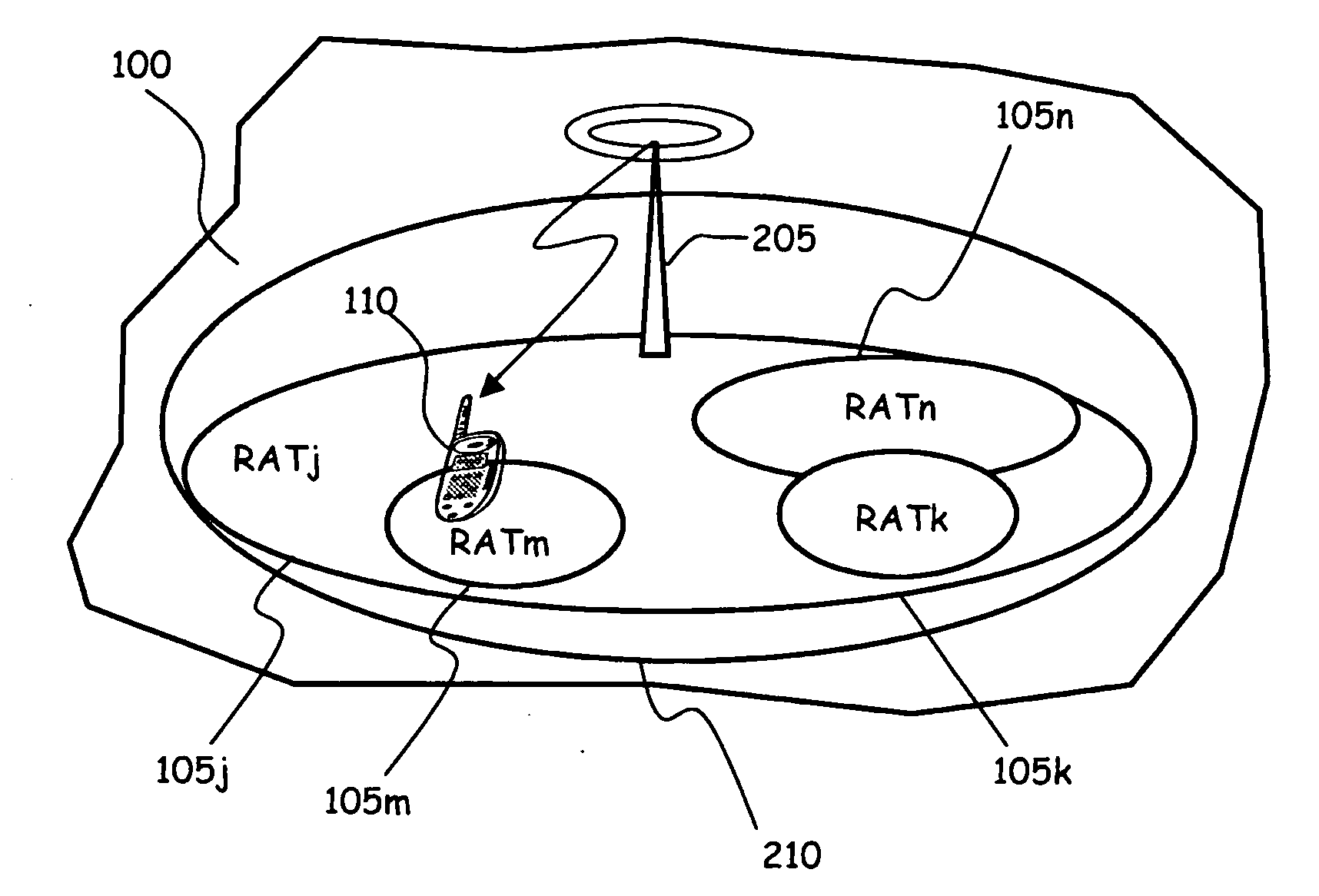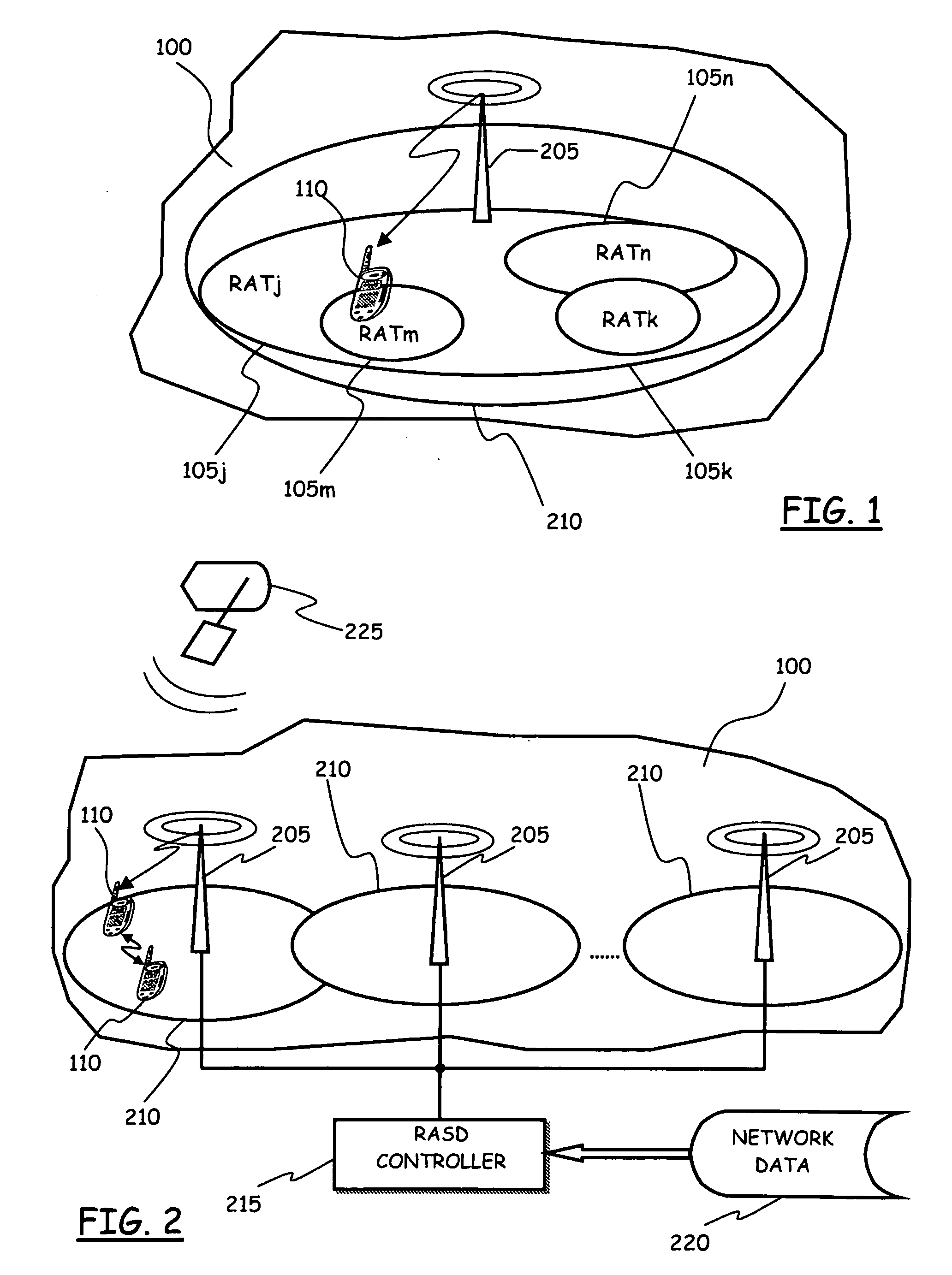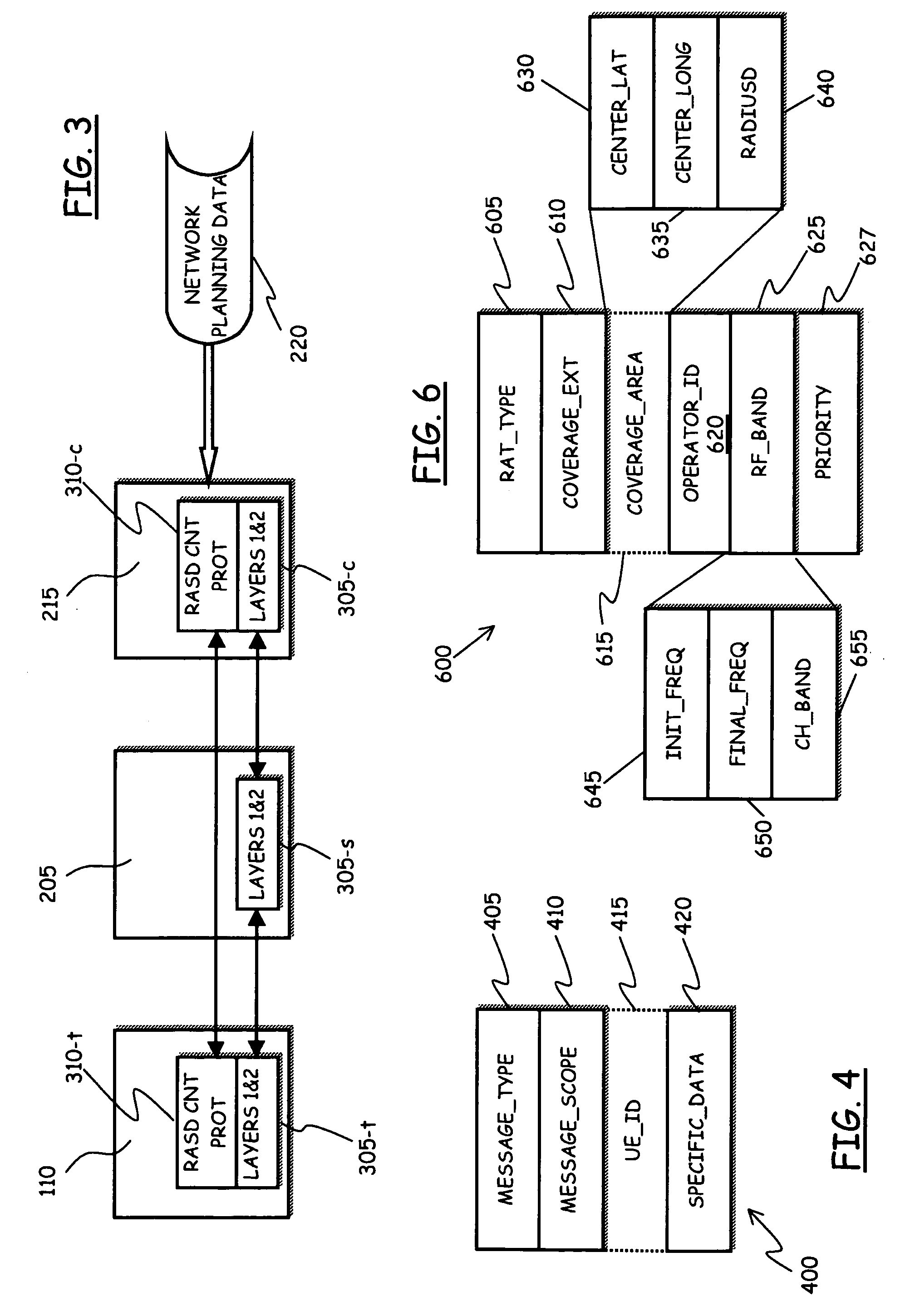Method and system for enabling connection of a mobile communication terminal to a radio communication network
- Summary
- Abstract
- Description
- Claims
- Application Information
AI Technical Summary
Benefits of technology
Problems solved by technology
Method used
Image
Examples
Embodiment Construction
[0053]Referring to the drawings, in FIG. 1 an heterogeneous or multi-RAT radio communication context is schematically depicted, where the present invention is advantageously applied. A geographic area of interest 100 is covered, in terms of radio signals, by two or more, in the shown example four different Radio Access Networks (RANs), implementing different RATs RATj, RATk, RATm, RATn, managed by a same or by different telecom operators. The different RATs may for example include a GSM RAT, a GSM / GPRS RAT, a GSM / GPRS / EDGE RAT, a UMTS FDD (Frequency Division Duplexing) RAT, a UMTS TDD (Time Division Duplexing) RAT, a WLAN (e.g., IEEE 802.11a / b / g) RAT, a CDMA2000 RAT, an IS-95 RAT. The number and specific type of RANs are not limitative to the present invention. Each RAN has a respective area of coverage 105j, 105k, 105m, 105n, which depends on the deployment choices of the telecom operator owner of said RAN.
[0054]Reference numeral 110 denotes a multi-mode and / or reconfigurable mobil...
PUM
 Login to View More
Login to View More Abstract
Description
Claims
Application Information
 Login to View More
Login to View More - Generate Ideas
- Intellectual Property
- Life Sciences
- Materials
- Tech Scout
- Unparalleled Data Quality
- Higher Quality Content
- 60% Fewer Hallucinations
Browse by: Latest US Patents, China's latest patents, Technical Efficacy Thesaurus, Application Domain, Technology Topic, Popular Technical Reports.
© 2025 PatSnap. All rights reserved.Legal|Privacy policy|Modern Slavery Act Transparency Statement|Sitemap|About US| Contact US: help@patsnap.com



